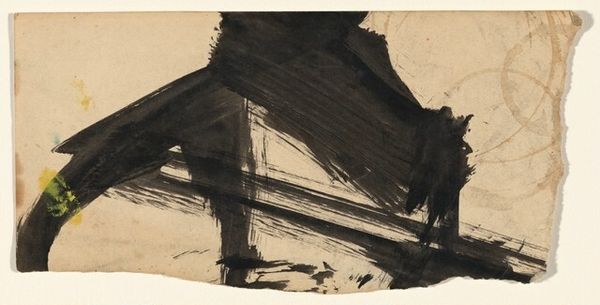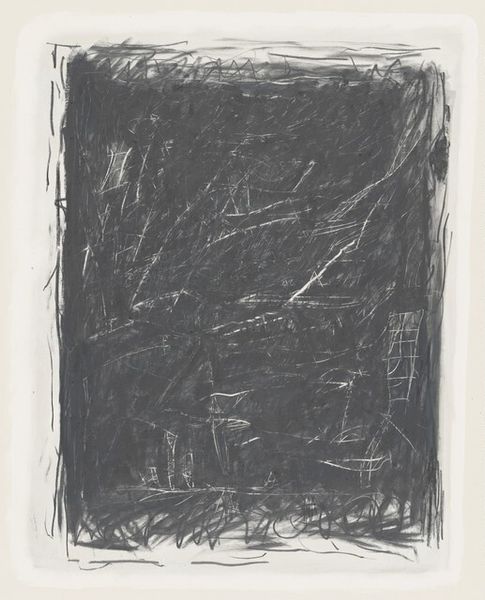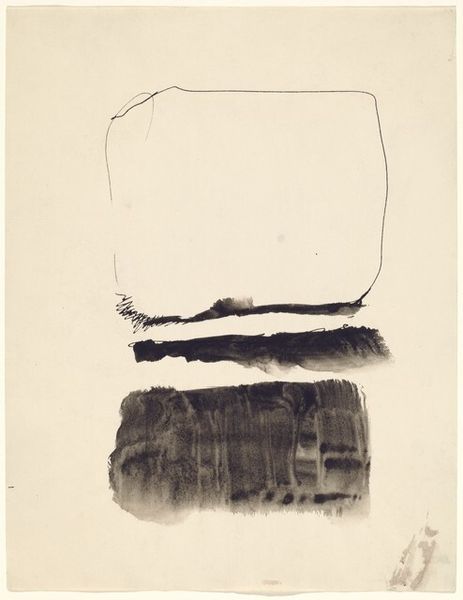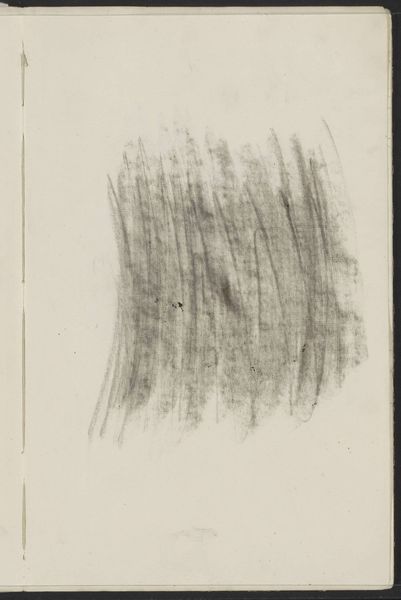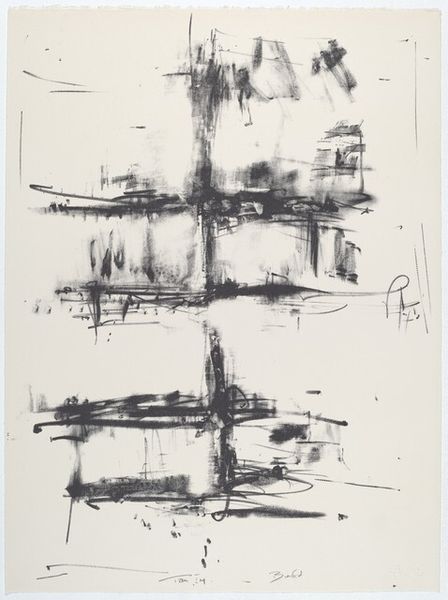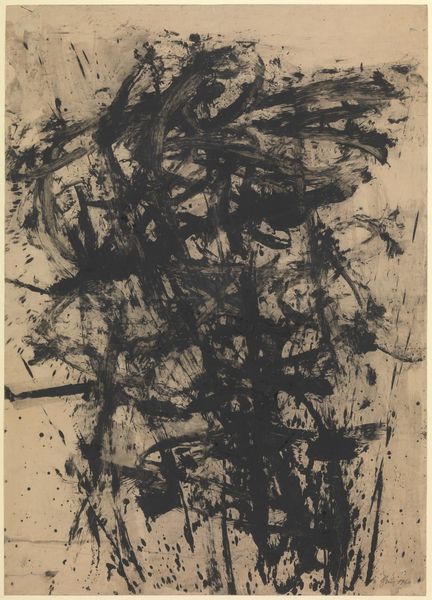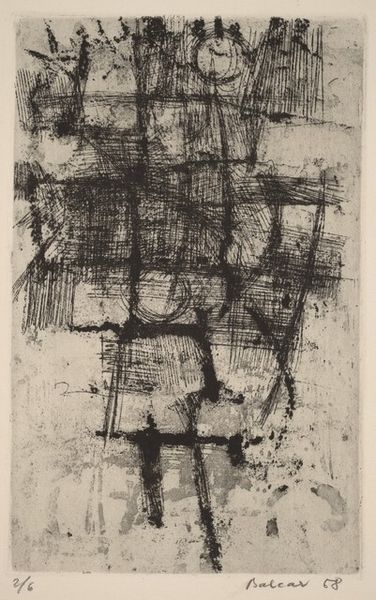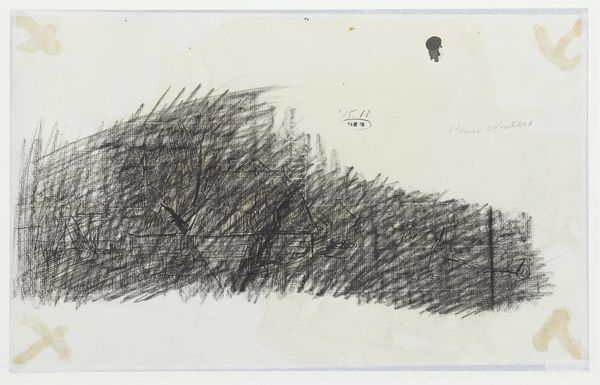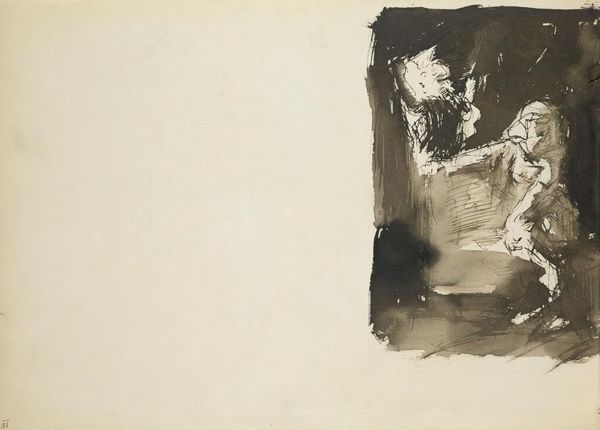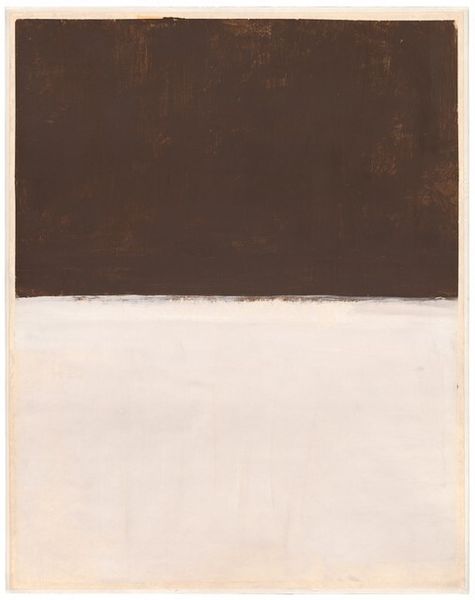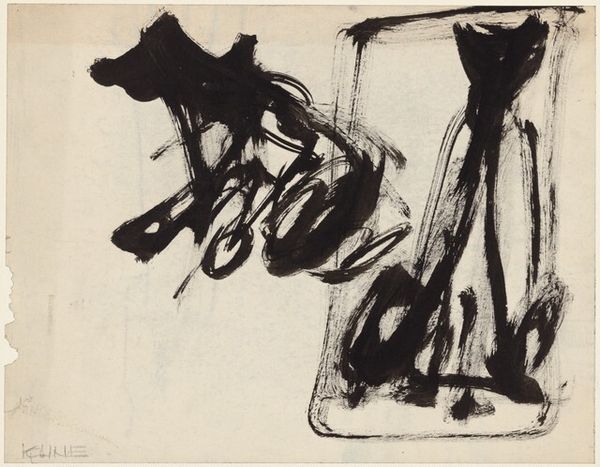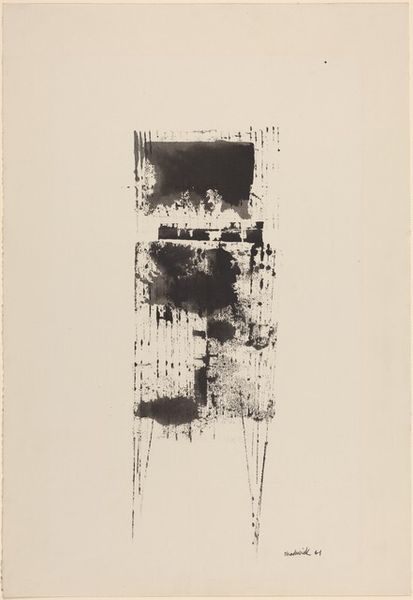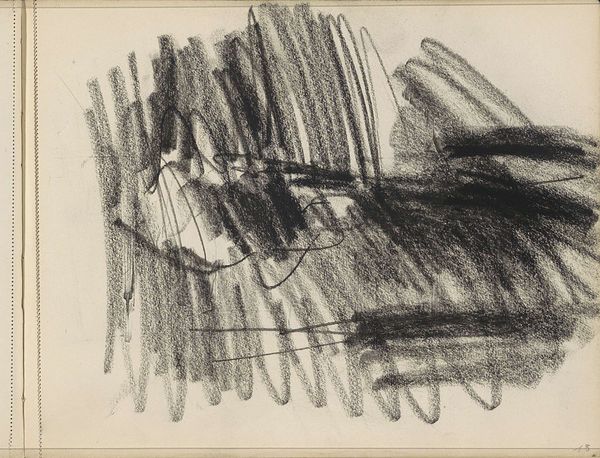
print, etching
#
abstract-expressionism
# print
#
etching
#
form
#
abstraction
#
line
Dimensions: sheet: 52.4 x 36.5 cm (20 5/8 x 14 3/8 in.) plate: 34.3 x 52.4 cm (13 1/2 x 20 5/8 in.)
Copyright: National Gallery of Art: CC0 1.0
Curator: So, what's your immediate impression of this work? To me, it evokes a feeling of constraint. Editor: Hmm, "constraint" is interesting. I see a kind of wild energy, like a dark scribble trying to escape the confines of its own shape. It’s dense, brooding even…like a storm cloud about to burst. Curator: That reading resonates with Arnulf Rainer's abstract expressionist approach. This print, called "Tomb Figure", was created in 1956 and relies on etching as a medium. Think about post-war Europe, the anxieties of existence and the turn to abstraction. Editor: Ah, right. "Tomb Figure". Suddenly that darkness feels intentional, laden with that historical weight. Etching too…the lines are so raw, almost violently scratched into the surface. Does the title refer to a literal tomb figure or more a figurative kind? Curator: I lean towards figurative, considering the context. Rainer was deeply involved with confronting existential themes. The 'tomb' could represent a suppression of identity or a societal structure he felt confined by. He later embraced Overpainting, using art to "exorcise" societal and personal demons. It challenges traditional ideas of art, questioning who gets to define its narrative and form. Editor: I get that. And maybe the figure isn’t in the tomb, but IS the tomb? This dense, contained energy embodying confinement itself? You know, art is like therapy for me...always shifting perspectives. Curator: Precisely. Looking at it through the lens of the 1950s, amidst shifting political landscapes and anxieties, what seems like a mere abstract form takes on a richer, more complex significance. Editor: Well, now I see that storm cloud morphing into something more… a contained scream, perhaps? Thank you, my subconscious will unpack that for weeks. Curator: And for me, understanding how historical context can shape something as abstract as raw lines is equally powerful. It gives voice to the previously unheard.
Comments
No comments
Be the first to comment and join the conversation on the ultimate creative platform.
